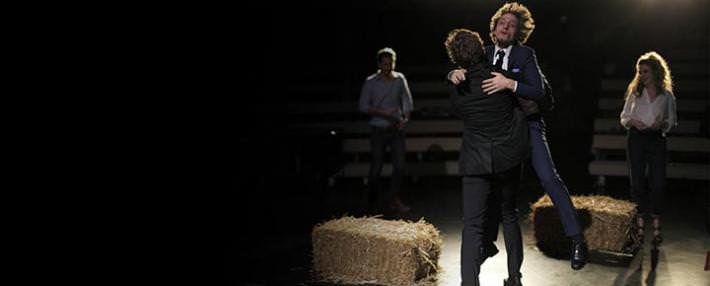Laban Movement

Who was Ruben Von Laban?
Ruben Von Laban was a Hungarian dance theorist that developed a method in which movement is determined by a number of characteristics and stimulating thought derived from movement.
He was born to an aristocratic family in Hungary, his father being Hungarian and his mother French. He had a traditional lineage with his father being a field marshal in the Austro-Hungarian Empire and thus went to a military academy. This ultimately didn’t last long, and Laban went to study architecture in Paris. Ecole Des Beaux Arts was where he enrolled, and Laban quickly became infatuated by the body and how it interacts with the space surrounding it. At the age of 30, Laban moved to Munich where he underwent work in expressional dance, or Ausdruckstanz in German. From there he moved to founding his own training centres in Zurich, focussing on choreography and dance. This spawned numerous facilities across Europe including France and Italy.
In 1930, he became the director of Allied State Theatres in Germany, before finally moving to the role as director of the Deutsche Tanzbühne. This was handed to him by Joseph Goebbels and he led the exploration of dance in Germany from this role. This ended in 1936 as one of his pieces wasn’t found to be in line with furthering the Nazi agenda.
Publishing various works on how movement can be utilised in performance, Laban has become a staple for all drama schools and their exploration in how to challenge an actor to find a character.
Technique
Also known as Laban Movement Analysis, the aim of the study is to break down how movement can be expressed into it’s simplest forms, allowing a performer to call upon them and experiment in a thorough manner. The movement can be said to be drawn from physiological, emotional and psychological aspect as to how a person can move. The underlying theme is transparency and ease of access for the mannerisms an actor can make onstage but is also used across multiple disciplines for a variety of uses.
Movement is generally divided into 4 separate categories; these are:
1. Body
The body section involves mainly physiological aspects of how bodies are formed and move; whether independently or with the aid of other parts. This section could perhaps include how movement is initiated in the body, whether it’s derived from the shoulder but involves the whole arm. Understanding how the body moves and breaking the mechanics down into their simplest forms can aid a performer in garnering what they’re capable and pushing themselves to the limit of what can be expected from them.
2. Effort
The inner intention of movement might be described as psychological, but it can make a huge difference for the movement delivered. An angry person wouldn’t punch someone softly for instance, they’ve been pushed over the edge and snapped. Understanding why someone moves the way they do internally can help an actor physicalise themselves in a way that suits their role on stage.
There are Dynamic factors to take into consideration:
-
Space – This could be directly moving through space to a spot, or indirectly meandering to its destination.
-
Weight – Strong movements show defined actions, or soft movements show limited determinations
-
Time – Sudden movements indicate reflexes designed for the purpose, or Sustained movements imply uncertainty/careful actions
-
Flow – Bound movements create the idea that somebody is tied to a specific thought, or Free movements indicate a carefree attitude.
These are just some examples to correlate why you might want to use different levels of effort.
3. Shape
The way the body changes during movement is described as Shape and, like most of Laban’s method, this section has a sub-category as well.
- "Shape Forms" - stationary shapes that the body takes.
- "Modes of Shape Change" - The way the body is interacting with the environment. There are three Modes of Shape Change:
- Shape Flow: Representing a link of the body to itself. Essentially a stream of consciousness expressed through movement - like wincing, shivering, tapping a foot in impatience etc.
- Directional: Representing the body being directed to some part of the environment.
- Carving: Representing a relationship where the body is actively interacting with the volume of the environment.
- "Shape Flow Support" – How your torso (primarily) can change its shape to support the movements being performed in the rest of the body.
All of these factors are linked and can easily drift to defining multiple movements.
4. Space
Laban was particularly fond of using space in an effective way. He saw the use of space as something which could be “harmonious”, like music. Laban wanted chorus’ to steal the show and synchronised movements with subtle influences of abstract personalisation’s could be highly effective in his eyes.
Two key aspects to look at are:
-
Kinesphere - The area that the body is moving within and how the mover responds to it.
-
Spatial Intention - The directions that the mover is identifying or using.
Laban, along with other techniques such as Chekhov's, are taught across drama schools throughout the world and his techniques are synonymous with performance in general. He was notably ambitious enough to record his findings and drama has benefitted because of it.

